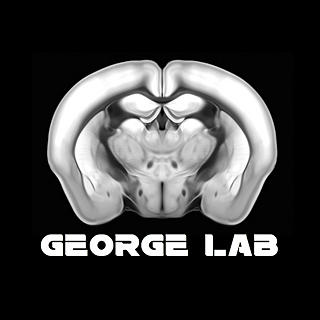Identification of an Orphan Receptor as Novel Molecular Target for Alcohol Dependence.
- Olivier George
- Oct 14, 2018
- 3 min read

The George lab identified the orphan receptor GPR139 as a potential target for the treatment of compulsive alcohol drinking and hyperalgesia during alcohol withdrawal.
This study, lead by Dr. Jenni Kononoff provides
robust preclinical evidence fort the efficacy of using GPR139 modulators for the treatment of alcoholism, and identify the habenula as a key brain region responsible for the therapeutic effect of GPR139 modulators. For details on the study, see the Research Highlight by Rosalind S.E. Carney.
An estimated 15 million adults in the United States have alcohol use disorder. Today, there are three medications approved by the Food and Drug Administration to treat alcohol addiction, but each has weaknesses and limitations.
In 2005, researchers sifting through the human genome for new receptors--looking for genetic sequences that resembled known receptors--uncovered a G-protein coupled receptor (GPCR) dubbed GPR139. Such receptors are also known as Orphan Receptors, because their ligand and function is unknown. Since discovering GPR139, scientists have shown that the receptor is primarily found in an area of the brain called the habenula. Since the habenula is activated during drug and alcohol withdrawal, Dr. Jenni Kononoff and her colleagues wondered whether GPR139 might play a role in addiction.
"We've been very interested in the habenula because this is the area of the brain that produces withdrawal symptoms, which an animal or human then tries to avoid by taking another drink or another dose of a drug," says George, who also serves as co-director of the institute's Alcohol Research Center Animal Core. In the new work, George's group took advantage of an experimental compound, known as JNJ-63533054, that activates GPR139. They gave the compound orally to 12 non-alcohol-dependent male rats and 17 alcohol-dependent rats. The compound had no effect on the alcohol intake of animals that weren't already dependent on alcohol or on the water intake of alcohol-addicted animals. But it did significantly decrease the alcohol intake of alcohol-addicted rats.
When Jenni Kononoff, PhD, a postdoctoral researcher in the George lab, looked more closely at the rats, she discovered that JNJ-63533054 was particularly effective at decreasing drinking in one subgroup of animals: those that had the highest alcohol intake and showed compulsive-like drinking behavior. These rats were so addicted to alcohol, that they would normally continue to drink even when their alcohol was adulterated with a bitter taste.
The pain threshold of rats--or humans--undergoing alcohol withdrawal is generally lower than normal, so to make a further connection between GPR139 and withdrawal, the scientists tracked the pain threshold of 17 rats going through alcohol withdrawal. When the rats were treated with JNJ-63533054, they found, the animals had a higher threshold for pain. Similar to the first experiment, the effect was strongest in rats that had the highest levels of compulsive drinking behavior. This suggests that, once again, activating GPR139 during withdrawal may provide therapeutical efficacy in the most severe cases of alcohol addiction, George says.
Finally, the team used thin tubes to deliver JNJ-63533054 to small areas of the brain. The drug decreased alcohol intake when it was infused into the habenula, they found, but not other brain areas, confirming the importance of the brain region in addiction and withdrawal. While the research was only performed in male rats, and only alcohol addiction was studied, George suspects the results will hold true both for females and for other drug addiction, since the habenula has been shown to be critical in drug withdrawal more broadly. "The good thing about this type of target is that is almost exclusively expressed in the brain, which limits side effects, and it seems to have no effect on individuals who are not dependent," says George. "Those are both positive indications of the receptor being druggable." His group is already planning more studies on GPR139's link to addiction and withdrawal, and the researchers are looking for additional compounds that activate or block the receptor.
1: Systemic and Intra-Habenular Activation of the Orphan G Protein-Coupled Receptor GPR139 Decreases Compulsive-Like Alcohol Drinking and Hyperalgesia in Alcohol-Dependent Rats. Kononoff J, Kallupi M, Kimbrough A, Conlisk D, de Guglielmo G, George O. eNeuro. 2018 Jul 2;5(3). pii: ENEURO.0153-18.2018. doi: 10.1523/ENEURO.0153-18.2018. eCollection 2018 May-Jun. PubMed PMID: 29971251; PubMed Central PMCID: PMC6027959.






Comments